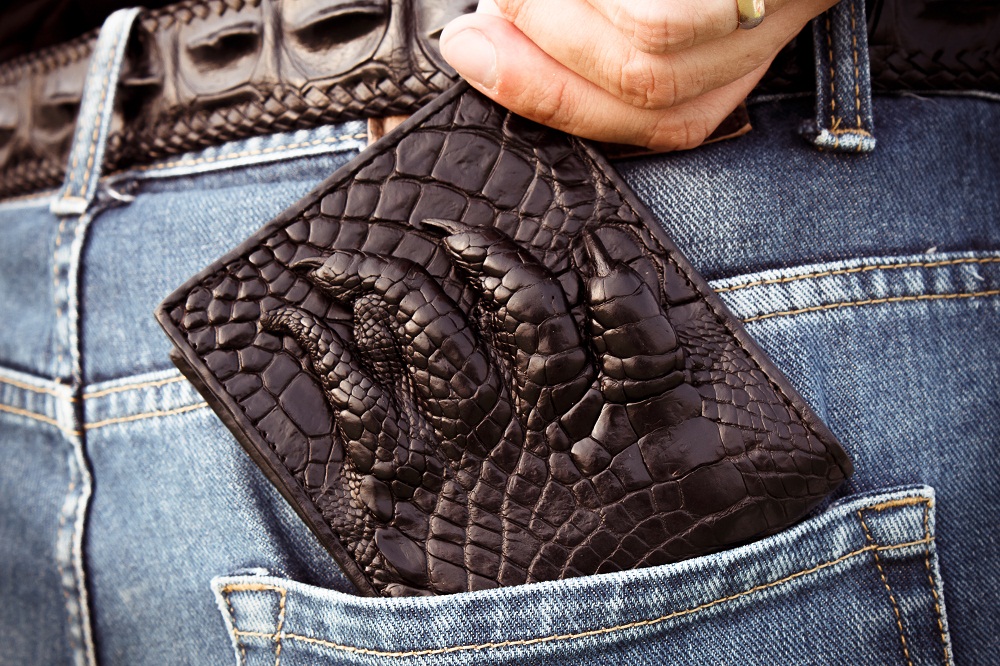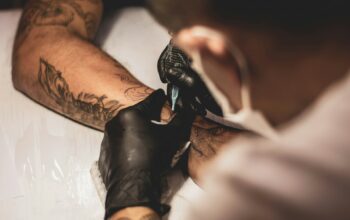When purchasing a wallet, buyers who are not very knowledgeable about reptile skin do not pay attention to details. Today there are a lot of forgeries on the market and crocodile leather is imitated quite often. Moreover, people who have never encountered reptile products can’t tell alligator leather from the crocodile or caiman one. Therefore, it is necessary to take into account the difference between the skins of these cold-blooded creatures because their quality is significantly divergent.
Types of Reptile Skins
First-class leather goods are made from the skin of alligators and crocodiles. These skins are the most qualitative and for this reason, they are very expensive. Caiman leather, on the contrary, is of lower quality but it has a more accessible price.
Caiman leather products are very common in markets and auctions. Such a skin is often confused with crocodile leather and it can become a serious problem for discerning buyers. It is common to see tags placed at caiman leather products saying they are made of a crocodile or alligator skin. Naturally, these items are sold at an unfairly high price. If you don’t want to become a victim of unscrupulous sellers, you should know how to distinguish skins of different species of reptiles.
Umbilical Scar
Alligators and crocodiles have umbilical scars with different patterns. Alligators bear an elongated scar with a pattern in the form of a web. Crocodile’s scar is more discrete and not as complex as an alligator’s one. Sometimes it is barely visible.
Since this pattern is unique to alligators, it helps to establish the authenticity of a skin sample. This part of the abdomen is considered the most valuable. Therefore, designers and manufacturers of premium products try to put this pattern in the most prominent place of an item.
Nape
The neck of reptiles has a number of small “horns” or tubercles. If you look closely you will see that they are located in a strictly defined order characteristic of each species. For example, an alligator has 2 rows of 2 horns each; crocodile carries rows of 4 and 2 horns, and caiman has a chaotic placement of horns.
Scale Patterns
Both alligator and crocodile skins have recognizable patterns of bony plate-shaped scales. A close scrutiny will reveal a small difference that will help to distinguish the two types.
Alligator skin has less uniform scales, sometimes with the abundance of scars. Even if leather is polished some small uneven lines will still be visible.
Crocodiles’ patterns usually resemble small squares of approximately the same size but they are not absolutely identically in shape. If you examine a crocodile wallet closely you will see that all those squares have a small dot in the middle – it is an undeveloped horny growth.
Caiman Leather
Cayman leather is less valuable. Only the abdominal part of the reptile is used in wallet manufacture because it has no protruding scales called osteoderms. All other parts of the skin (head, back, and tail) are covered with armor that is much thicker than that of crocodiles or alligators.
Related Posts












